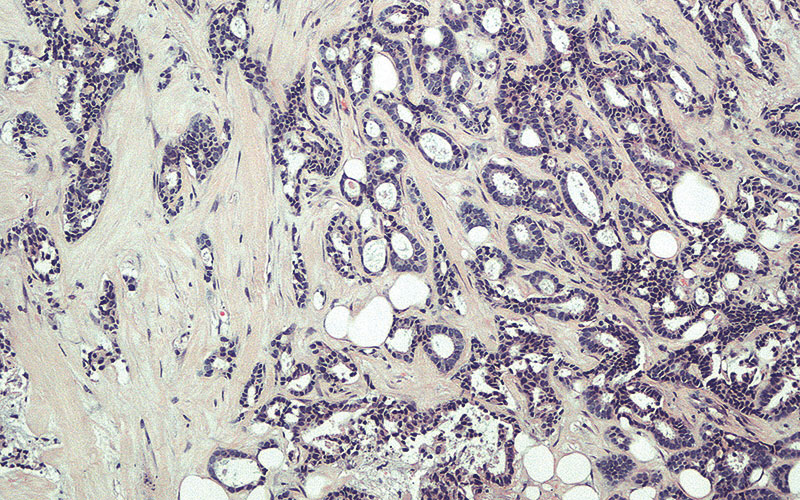The second instalment of our biomedical science quiz. This time, we have four experts setting questions to test members’ knowledge across the disciplines.
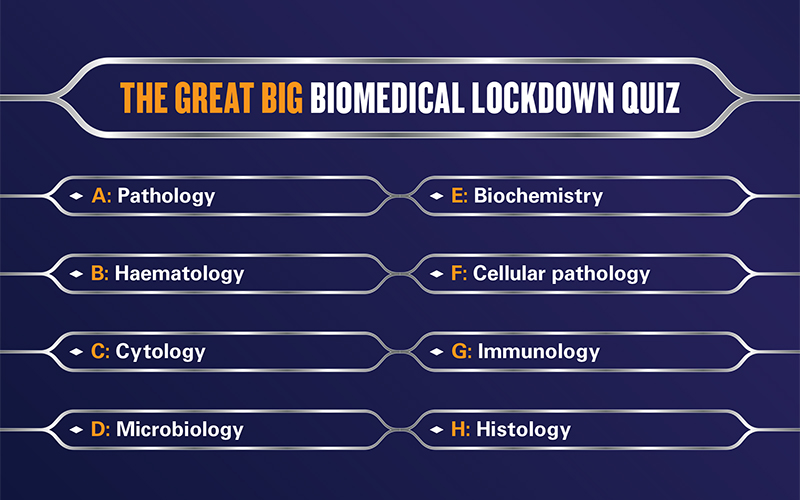
Round one: Haematology
Quizmaster: Colin Mudd, Higher Specialist Biomedical Scientist, Nottingham University Hospitals NHS Trust
1. In which journal and which year was the French-American-British (FAB) classification first published?
2. Who first described Auer rods and in which year?
3. What is Immerslund–Grässbec syndrome?
4. Who are credited with discovering monoclonal antibodies, in which year?
5. When would you perform an Arneth count?
6. What test is the Donath–Landsteiner used to diagnose?
7. In what cells are you most likely to see Russell bodies?
8. In coagulation, what is an alternative name for the Fletcher factor?
9. Give an alternative name for Cooley's anaemia and a two-word definition.
10. What is Jordan's anomaly?
Round two: Microbiology
Quizmaster: Cherie Beckett, Biomedical Scientist, Princess Alexandra Hospital NHS Trust
1. What are the “big five” carbapenemases in the Enterobacteriaceae in the UK?
2. The oxidase test is used to determine if an organism possesses the cytochrome oxidase enzyme, but what is its chemical composition?
3. NYC or GC agar usually contains four antimicrobials for the selective isolation of Neisseria spp. Which four most commonly are these?
4. Tularaemia is a bacterial zoonotic disease caused by which bacterium?
5. The HACEK group is a group of fastidious Gram-negative organisms associated with human bites and infective endocarditis. What are these?
6. The yeast Malassezia furfur will not grow on traditional Sabouraud's agar, unless which common kitchen-cupboard essential is supplemented?
7. Which three major HIV genes code for structural proteins?
8. What is the mechanism of action of the antibiotic teicoplanin?
9. Lemierre's syndrome is a condition characterised by septic thrombophlebitis in the internal jugular vein. Which organism is typically responsible for this condition?
10. Which non-specific nucleic acid dye can be useful in cell-cycle determination, but also in the fluorescence-based detection of Trichomonas vaginalis?
Round three: Biochemistry
Quizmaster: Sheri Scott, Senior Lecturer in Biomedical Science, Nottingham Trent University
1. What five main tests generally make up a U&E?
2. What does HPLC stand for?
3. HbA1C is monitored in which disease?
4. Which are the three main antibodies monitored in an immunoglobulin test?
5. What hormone is high in primary hypothyroidism?
6. What does LDH stand for?
7. What method is used to measure osmolarity?
8. What does CZE stand for?
9. What routinely measured analyte would you expect to be high in saline drip contamination?
10. What further tests might be requested in response to suspiciously low glucose levels?
Round four: Cellular pathology
Quizmaster: Ashley Ballard, Senior Biomedical Scientist Cellular Pathology, The Royal Bournemouth Hospital
1. The Gordon and Sweet’s Reticulin stain was developed in 1936; what type of stain is this an example of (argyrophilic or argentaffin)?
2. What is the stain pictured in Fig 1, and what is the item marked by the arrow?
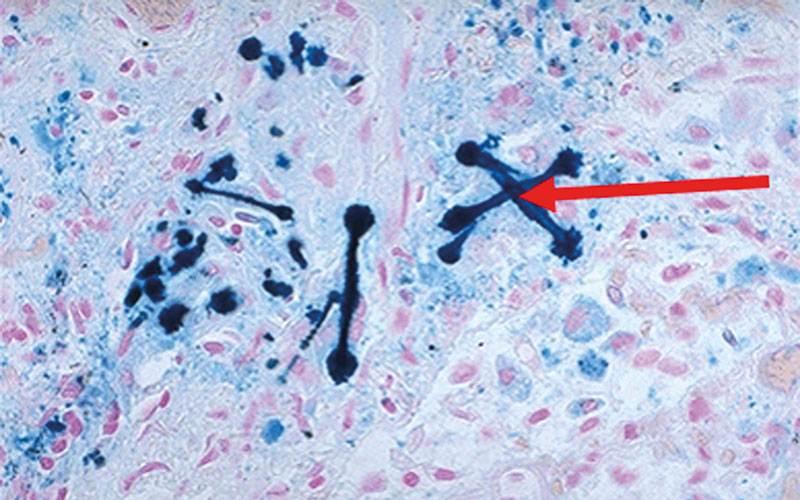
3. What type of cell is shown in Fig 2 (marked with an arrow), what does it indicate, and what additional tests would you recommend to confirm the diagnosis?
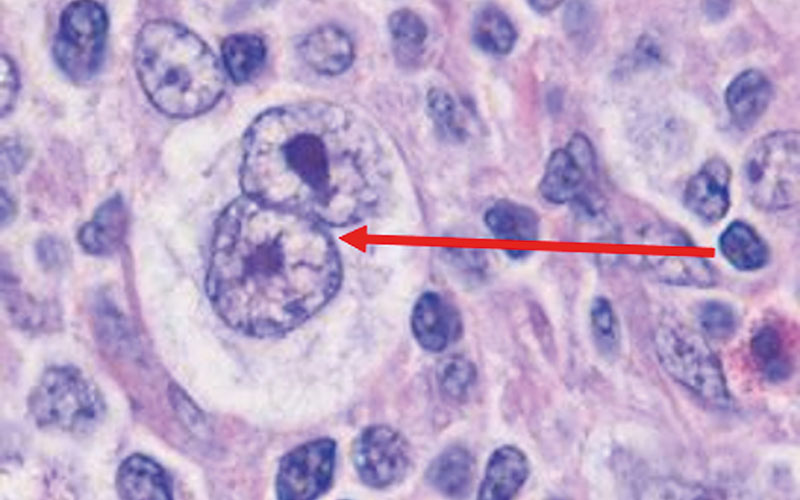
4. The first documented use of telepathology was in 1968, when a black and white image of tissue was shared in real time between Logan airport and the Massachusetts General Hospital in Boston. What is the difference between telepathology and modern whole-slide imaging systems?
5. Image analysis is a major area of research in the field of digital pathology. Name some of the clinically validated apps currently available to support histological diagnosis.
6. Identify the labelled sections in Fig 3.
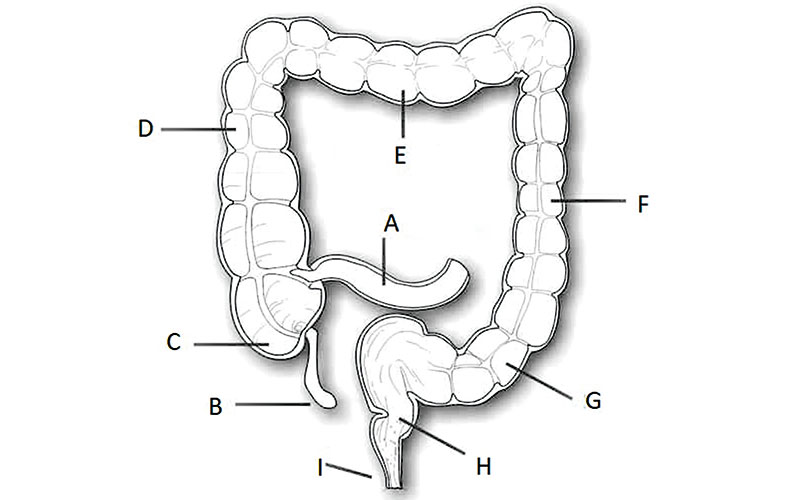
7. Identified in 1964 by Antony Epstein, Yvonne Barr, and Burt Achong, the Epstein–Barr virus (EBV) is associated with a number of cancers – name these.
8. In 2005, Robin Warren and Barry Marshall were awarded the Nobel prize for identifying the cause of peptic ulcer disease. What is the causative agent, and what special stains can be used to identify it?
9. When carrying out biomedical scientist-led dissection, what would you submit from a normal-looking appendix?
10. A 23-year-old Jewish woman presents with a firm, immovable 2cm mass in her left breast; there are no overlying skin lesions. The family history indicates that the patient’s mother, aunt, and grandmother had similar lesions. Fig 4 shows an H&E stain of the biopsy – what does this show and based upon the patient’s family history what additional staining would you recommend?
